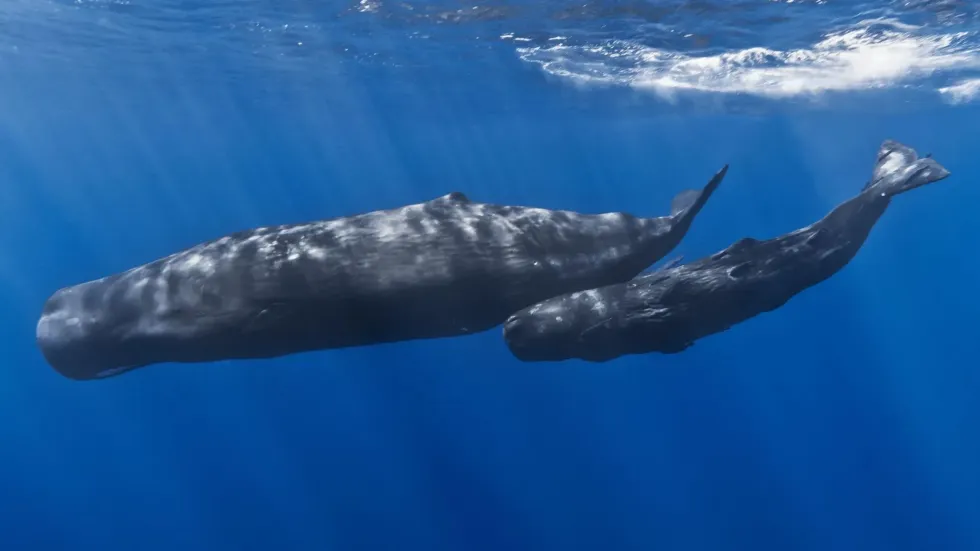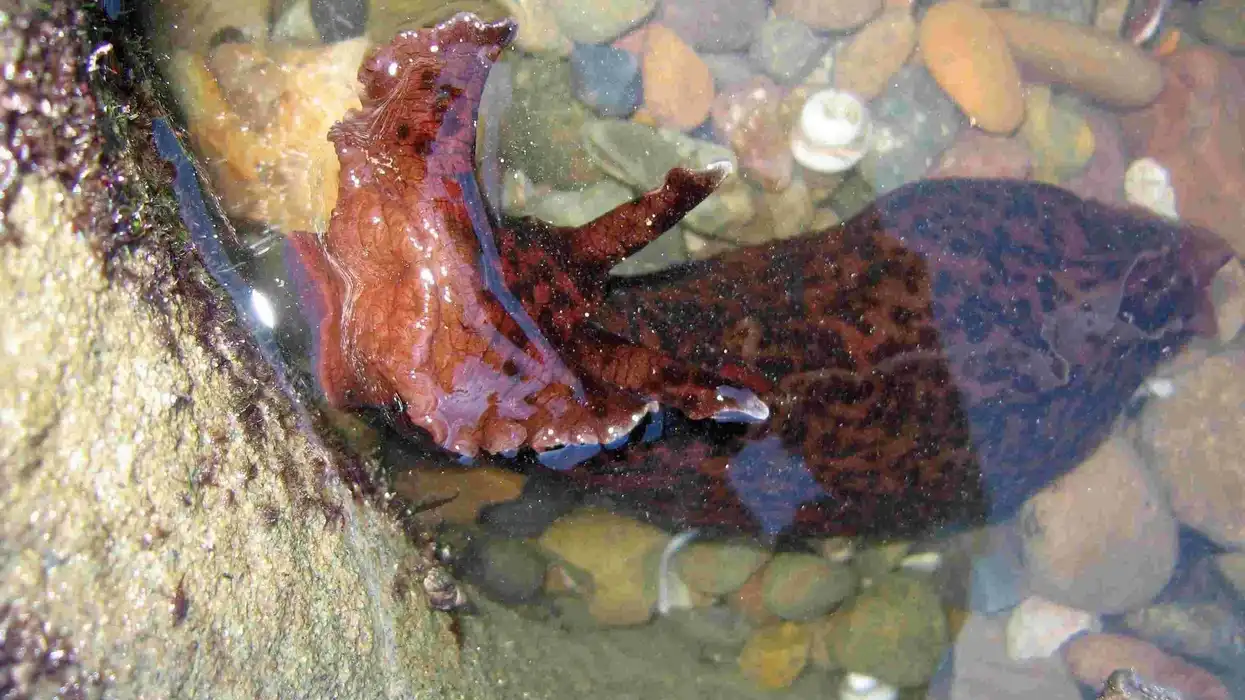Are you fond of whales, dolphins, and porpoises like the bowhead whale and spinner dolphin? We present to you, southern bottlenose whales. As they are found near Antarctica, they are also known as the Antarctic bottlenose.
The southern bottlenose whale distribution is mainly spread across the Southern Hemisphere and the southern bottlenose whale habitat is mainly the temperate marine waters of the Southern Hemisphere. They are majorly located near the Antarctic waters and extend up to the tropical waters near South Africa.
Based on a worn skull William Henry Flower, a zoologist first described the Antarctic bottlenose. These whales have a small dorsal fin and flippers.
The males are comparatively bigger and heavier in size in comparison to the females. Few physical differences between the sexes are depicted in this species, so sexual dimorphism is present in this species.
For more relatable content, check out these blue whale facts and gray whale facts for kids.
Southern Bottlenose Whale Interesting Facts
What type of animal is a southern bottlenose whale?
The southern bottlenose whale (Hyperoodon planifrons) is a type of whale.
What class of animal does a southern bottlenose whale belong to?
The southern bottlenose whale belongs to the class Mammalia of the Animalia kingdom.
How many southern bottlenose whales are there in the world?
Southern bottlenose whales (Hyperoodon planifrons) are not a widely researched or a known species of whales. However, few reports claim that the southern bottlenose whale population range was around 55,000-74,000 individuals about a few years ago.
Where does a southern bottlenose whale live?
Southern bottlenose whales (Hyperoodon planifrons) are primarily located in the Southern Hemisphere of the world. This can also be understood from their name which indicates that they live predominantly in the Southern Ocean that is located in the Southern Hemisphere.
These whales can also be found in some parts of the Indian Ocean, the Pacific Ocean, and as well as in the Antarctic Ocean. These marine mammals have also been located near western Australia, New Zealand, the Falkland Islands, Argentina, South Africa, and Brazil.
What is a southern bottlenose whale's habitat?
These whales are marine mammals and they are solely aquatic animals. These animals are deep divers and are usually found at depths of over 3,280.8 ft (1,000 m) in deep oceans.
These animals tend to prefer cold waters and they move towards Antarctica during the summers. However, during winters, in search of warmer waters, they move to the temperate and tropical waters.
Who does a southern bottlenose whale live with?
These whales are highly social animals. These whales live in small herds that range from around 2-12 individuals. Southern bottlenose whales actively take part in numerous activities together as one unified compact group. They travel, hunt, and also dive together.
How long does a southern bottlenose whale live?
The southern bottlenose whale life cycle spans over 50 years for males. For females, the lifespan is above a minimum of 37 years.
How do they reproduce?
It is assumed that the reproductive process of these whales is very similar to their relatives, northern bottlenose whales (Hyperoodon ampullatus). The time taken to reach sexual maturity in these whales tends to take a longer time in comparison with other animals.
The males attain sexual maturity at 8-12 years of age while the females attain maturity at 7-11 years. Calving usually occurs after almost two years.
The gestation period in these whales is also long and takes a total timespan of around 12 months. After a year, the process of weaning takes place.
What is their conservation status?
The IUCN Red List has listed the southern bottlenose whales as a species of Least Concern. The population trend has been unknown over the last couple of years as not much is known about this species of whale.
Human activities like the destruction of habitat like water pollution, climate change, and oil spills play an active role in the depletion of these species. However, since they are still considered as a species of Least Concern, we have nothing to fear about their extinction.
Southern Bottlenose Whale Fun Facts
What does a southern bottlenose whale look like?
These animals have a cylinder body shape with a tapered tail. They are short-beaked whales that extend from their foreheads.
The foreheads are different in males compared to the females and young ones. We can say that sexual dimorphism is evident in these whales. The dorsal fin is located in the lower half of the body and bears the shape of a sickle.
The flippers are also short in size. These beaked whales are gray-brownish in color while the color fades and becomes paler in the sides and the under portions.
We've been unable to source an image of a southern bottlenose whale and have used an image of a humpback whale instead. If you are able to provide us with a royalty-free image of a southern bottlenose whale, we would be happy to credit you. Please contact us at hello@kidadl.com.

How cute are they?
Humans, in general, have a tendency of being afraid of large animals like whales, therefore the majority of the human population will find these animals scary. However, marine biologists and animal lovers are bound to find these whales to be adorable.
How do they communicate?
Owing to very limited data and information being available, not much is known about the communicative methods of the southern bottlenose whale. However, as sounding is very common in all species of whales, the southern bottlenose whale is also no different.
Sounding is often seen when the whales come to the water surface after long dives. A variety of sounds like whistles and clicks are heard which act as means of communication among these species. These are highly social animals and they communicate effectively with members of their herd.
How big is a southern bottlenose whale?
This beaked whale attains lengths of 22-25.6 ft (6.7-7.8 m). In comparison with a fin whale which is 60-80 ft (18.3-24.4 m), we can say that the latter is larger in size.
How fast can a southern bottlenose whale swim?
The exact speed at which these whales travel is currently unknown. However, we can make an assumption based on the speed of their counterparts, northern bottlenose whales. The latter usually swims at a speed of 3.1 mph (5 kph). But these whales can attain speeds of 16.8 mph (27 kph) for short bursts.
How much does a southern bottlenose whale weigh?
The beaked whale or the southern bottlenose whale size weighs around 13,668.7-17,416.5 lb (6,200-7,900 kg). In comparison with the sperm whale which is 30864.7-90389.5 lb (14,000-41,000 kg), we can say that the latter is heavier in weight.
What are the male and female names of the species?
There are distinct and unique names that are used to refer to male and female whales. While the males are known as bulls, their female counterparts are known as cows.
What would you call a baby southern bottlenose whale?
Just like all other species of whales, baby whales are known as calves. Therefore, in the case of a southern bottlenose whale baby, they are also known as calves, or more accurately it would be known as a southern bottlenose whale calf.
What do they eat?
These species of whales are carnivorous animals, and they only feed on animal flesh. The southern bottlenose whale diet is known to be primarily mollusks like squids. They also feed on other fishes like Patagonian tooth-fish that are found in their habitat.
Are they dangerous?
It is currently unknown whether these whales are dangerous to humans. However, there have been no records of these whales attacking humans. Bottlenose whales in general are friendly animals and have depicted great curiosity when it comes to humans.
Would they make a good pet?
It would be unwise to keep these whales as pets. There are many reasons for this. First of all, you need to have a wide space to keep these animals.
Next, you will have to recreate the habitat and then the ecosystem of the ocean in your home backyard or tank. Lastly, keeping whales as pets is illegal in many countries. It would be a terrible idea to keep these animals as pets.
Did you know...
These whales are active divers and they are prone to dive for a long span of time. These dives can often span up to 45 minutes.
Why is it called a bottlenose whale?
The primary reason as to why these genera of whales are known as bottlenose whales is mainly due to them being beaked whales. The northern bottlenose (Hyperoodon ampullatus) is derived from the Latin where 'ampulla' literally means 'a bottle', which is the shape of the beak of these whales.
Does the southern bottlenose whale have teeth?
Not all southern bottlenose whales have teeth. Only adult males are known to have teeth. The functional teeth consist of a single pair that is located right at the tip of the lower jaw. Two conical teeth are also found in the lower jaw.
Here at Kidadl, we have carefully created lots of interesting family-friendly animal facts for everyone to discover! Learn more about some other mammals from our cheetah interesting facts and Asian elephant surprising facts pages.
You can even occupy yourself at home by coloring in one of our free printable short-finned pilot whale coloring pages.
Main image by Gabriel Barathieu
Second image by Henrik Dreisler









